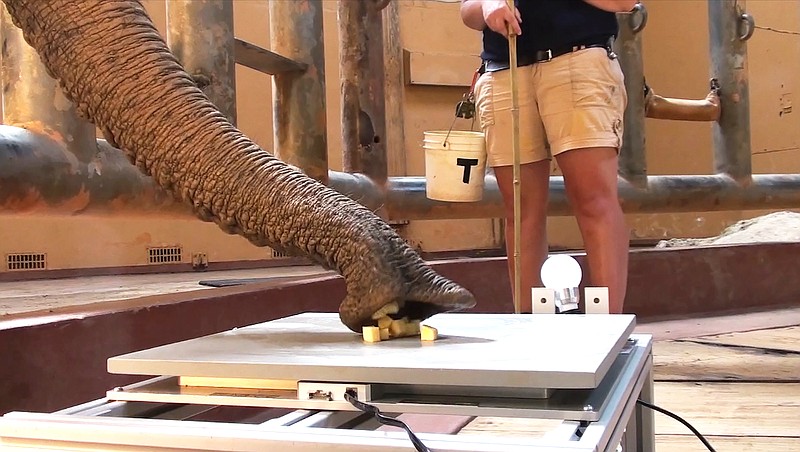An elephant's trunk is a marvel of biology. Devoid of any joints or bone, the trunk is an appendage made of pure muscle that is capable of uprooting trees and gingerly plucking individual leaves and also boasts a sense of smell more powerful than a bomb-sniffing dog's.
Elephants use their trunks in a variety of ways. They use them to drink, store and spray water, and they also blow air through them to communicate — their 110-decibel bellows can be heard for miles.
"It's like a muscular multitool," said Andrew Schulz, a mechanical engineering doctoral student at the Georgia Institute of Technology.
In a new study published in The Journal of the Royal Society Interface, Schulz and his colleagues reported on how elephants can use their trunks for yet another function: applying suction to grab food, a behavior previously thought to be exclusive to fishes.
Contrary to popular belief, the trunk does not act like a straw.
"What they do is actually drink water into their trunk and they store it," Schulz said. "So the elephant trunk is actually like a trunk."
Working closely with keepers at Zoo Atlanta, the researchers videotaped how Kelly, a 34-year-old female African elephant weighing more than 7,400 pounds, grabbed different types of food. When presented with many small rutabaga cubes, the elephant inhaled air through her trunk for suction to pick them up. But if the rutabaga cubes were larger, or few in number, Kelly instead preferred to use her trunk's two opposable "fingers" to grab them.
Suction feeding was necessary, however, when Kelly faced the most challenging food item the researchers set on the table: a single tortilla chip.
Michael Garstang, an emeritus professor at the University of Virginia and the author of "Elephant Sense and Sensibility: Behavior and Cognition," noted that it was not clear whether elephants in the wild would naturally use suction feeding.
Still, he said the new study could have useful technological applications for improving robotics. Animal appendages like elephant trunks and octopus arms have already inspired innovations in soft robotics.

